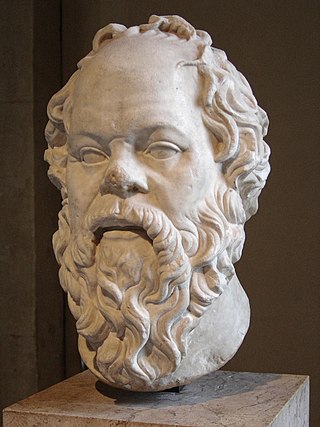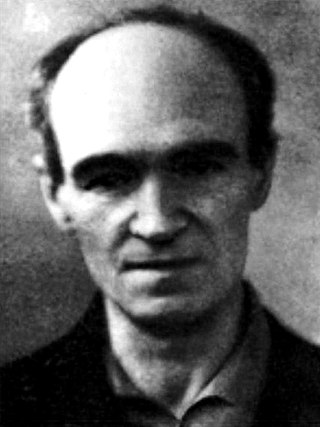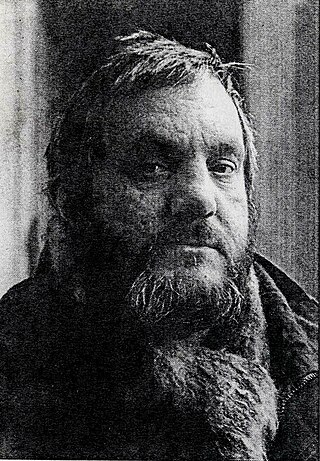
Immanuel Kant was a German philosopher and one of the central Enlightenment thinkers. Born in Königsberg, Kant's comprehensive and systematic works in epistemology, metaphysics, ethics, and aesthetics have made him one of the most influential and controversial figures in modern Western philosophy.

Carl Gustav Jung was a Swiss psychiatrist and psychoanalyst who founded analytical psychology.

A syllogism is a kind of logical argument that applies deductive reasoning to arrive at a conclusion based on two propositions that are asserted or assumed to be true.

Analytic philosophy is a branch and tradition of philosophy using analysis, popular in the Western world and particularly the Anglosphere, which began around the turn of the 20th century in the contemporary era in the United Kingdom, United States, Canada, Australia, New Zealand, and Scandinavia, and continues today. Analytic philosophy is often contrasted with continental philosophy, coined as a catch-all term for other methods, prominent in Europe.

Analytical psychology is a term coined by Carl Jung, a Swiss psychiatrist, to describe research into his new "empirical science" of the psyche. It was designed to distinguish it from Freud's psychoanalytic theories as their seven-year collaboration on psychoanalysis was drawing to an end between 1912 and 1913. The evolution of his science is contained in his monumental opus, the Collected Works, written over sixty years of his lifetime.

The Russian avant-garde was a large, influential wave of avant-garde modern art that flourished in the Russian Empire and the Soviet Union, approximately from 1890 to 1930—although some have placed its beginning as early as 1850 and its end as late as 1960. The term covers many separate, but inextricably related, art movements that flourished at the time; including Suprematism, Constructivism, Russian Futurism, Cubo-Futurism, Zaum, Imaginism, and Neo-primitivism. Many of the artists who were born, grew up or were active in what is now Belarus and Ukraine, are also classified in the Ukrainian avant-garde.
The development of Indian logic dates back to the anviksiki of Medhatithi Gautama ; the Sanskrit grammar rules of Pāṇini ; the Vaisheshika school's analysis of atomism ; the analysis of inference by Gotama, founder of the Nyaya school of Hindu philosophy; and the tetralemma of Nagarjuna.

Pavel Nikolayevich Filonov was a Russian avant-garde painter, art theorist, and poet.

Google Analytics is a web analytics service offered by Google that tracks and reports website traffic and also the mobile app traffic & events, currently as a platform inside the Google Marketing Platform brand. Google launched the service in November 2005 after acquiring Urchin.
The Philemon Foundation is a non-profit organization that exists to prepare for publication the Complete Works of Carl Gustav Jung, beginning with the previously unpublished manuscripts, seminars and correspondences. It is estimated that an additional 30 volumes of work will be published and that the work will take three decades to complete.

Anatoly Ivanovich Sivkov (Russian: Анатолий Иванович Сивков)(born 18.02.1952-died 07.02.2017) is a contemporary Russian painter. Sivkov studied from 1966-73 at the renowned Novosibirsk State University in Akademgorodok, a suburb of Novosibirsk. In recent years he lived and worked in St. Petersburg. Buried at the Kovalevsky cemetery in St. Petersburg .Russia.

Franz Thonner was an Austrian taxonomist and botanist from Vienna. In the spring of 1896, he made his first trip to the African interior to explore the botany and people in the northern part of the Congo Basin. Besides his comprehensive collection of plants, he embarked on a thorough ethnographic study of the region.

Michael Vasilyevich Matyushin was a Russian painter and composer, leading member of the Russian avant-garde. In 1910–1913 Matyushin and his wife Elena Guro (1877–1913) were key members of the Union of the Youth, an association of Russian Futurists. Matyushin, a professional musician and amateur painter, studied physiology of human senses and developed his own concept of the fourth dimension connecting visual and musical arts, a theory that he put to practice in the classrooms of Leningrad Workshop of Vkhutein and INHUK (1918–1934) and summarized in his 1932 Reference of Colour. Matyushin conducted experiments at his Visiology Center (Zorved) to demonstrate that expanding visual sensitivity from retinian optical centers would enable the discovery of "new organic substance and rhythm in the apprehension of space." He tried to teach himself and his students to see with both eyes, each independently, and to widen the field of their vision. He describes some of his work and ideas in a long essay titled "An Artist's Experience of the New Space."

Union of Artists of Saint Petersburg was established on August 2, 1932, as a creative union of the Leningrad artists and arts critics. Prior to 1959, it was called "Leningrad Union of Soviet Artists". From 1959, it was called as Leningrad branch of Union of Artists of Russian Federation. After the renaming of the city in 1991, it became known as the Saint Petersburg Union of Artists.
The year 1925 was marked by many events that left an imprint on the history of Soviet and Russian Fine Arts.

The year 1927 was marked by many events that left an imprint on the history of Soviet and Russian Fine Arts.
The year 1941 was marked by many events that left an imprint on the history of Soviet and Russian Fine Arts.

Boris Smirnoff was a Franco-Russian cubist, avant-gardist and analytical art painter.

"The Analytical Language of John Wilkins" is a short essay by Argentine writer Jorge Luis Borges, first printed in La Nación on 8 February 1942 and subsequently published in Otras Inquisiciones (1937–1952). It is a critique of the English natural philosopher and writer John Wilkins's proposal for a universal language and of the representational capacity of language generally. In it, Borges imagines a bizarre and whimsical fictional Chinese taxonomy later quoted by Michel Foucault, David Byrne, and others.
Vladimir Mayakovsky is a tragedy in verse by Vladimir Mayakovsky written in 1913, premiered on December 2 of that year and published in 1914 by the First Futurists' Journal, later to be included into the Simple as Mooing collection. An avant-garde verse drama, satirizing the urban life and, at the same time, hailing the up-and-coming revolution of the industrial power, it featured a set of bizarre, cartoonish characters and a poet protagonist.














